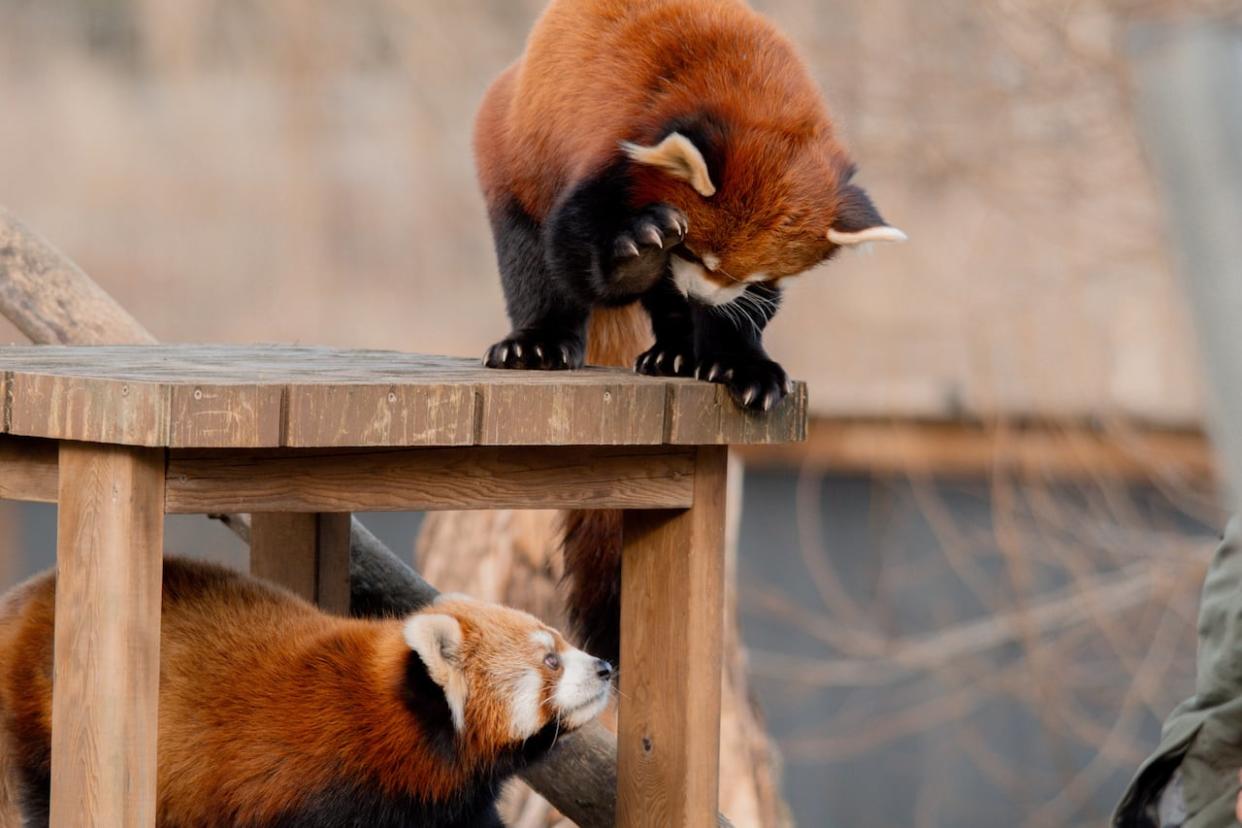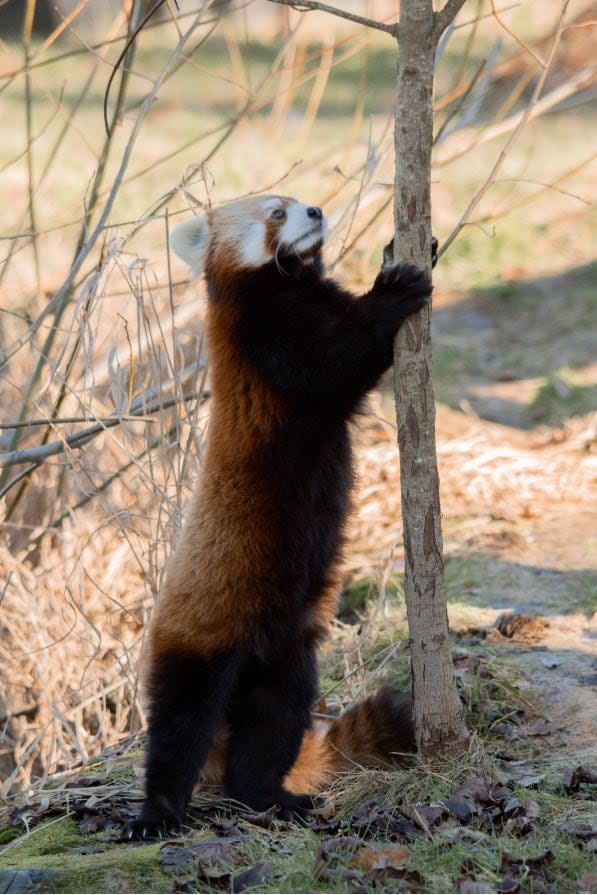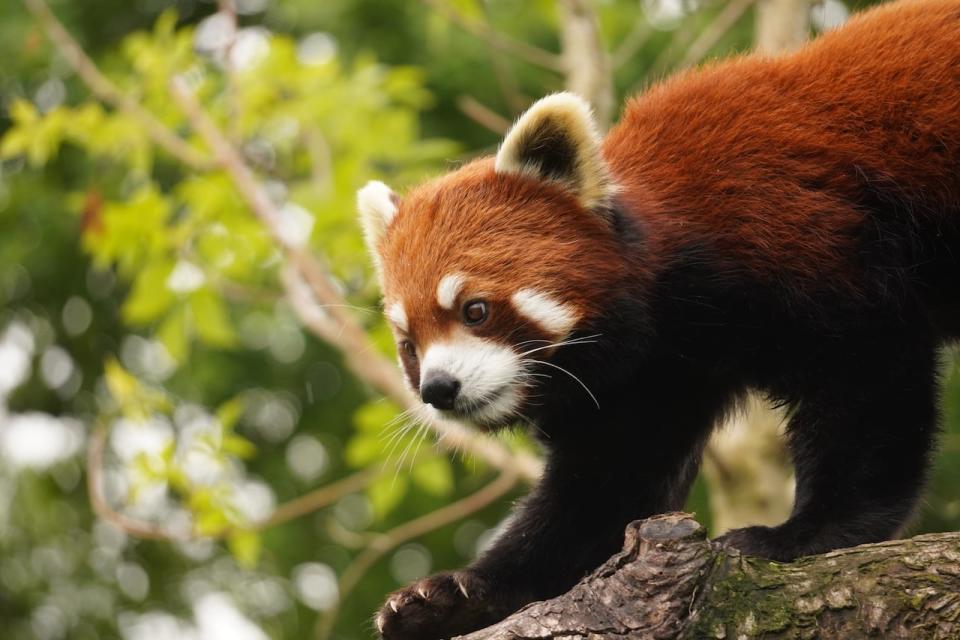Paprika the red panda meets her mate at the Greater Vancouver Zoo

A red panda named Paprika was introduced to her potential mate at the Greater Vancouver Zoo recently, as part of a conservation program for the endangered species.
After being in quarantine since she arrived from the Toronto Zoo in December, the six-year-old red panda finally met her match, Arun, on Saturday.
"I won't say that they are in love, but they are definitely enjoying being together," said Menita Prasad, director of animal care at the zoo.
The hope is that the two will produce cubs as part of a species survival plan.

Paprika, pictured here, is described by her carers as curious and motivated by food. (Submitted by the Greater Vancouver Zoo)
The introduction went well, Prasad said. Paprika, who is curious and food-motivated, is exploring her new surroundings and Arun is being respectful and giving her space when she indicates she needs it.
According to the zoo, red pandas breed from January through March, with babies being born in the late spring.
If the pair are successful in breeding, Prasad said the cubs would stay with their family for at least a year, after which they may be relocated to breed themselves.
They wouldn't be Arun's first cubs — the zoo brought in a red panda named Sakura in 2021. She gave birth to two cubs, Maple and Mei Mei, in June 2022. The three have been relocated to different zoos across Canada.
There are between 2,500 and 10,000 red pandas left in the wild, according to Red Panda Network, a conservation group with offices in Kathmandu, Nepal and Eugene, Ore.
The red panda population has been cut in half in the last 20 years and the mammals are classified as endangered. The network said the main threat to the species, which is native to the Eastern Himalayas, is habitat loss.
Species survival program draws criticism
The breeding effort at the Greater Vancouver Zoo is part of the species survival plan program run by the Association of Zoos and Aquariums (AZA), a non-profit based in Silver Spring, Md., that represents about 235 facilities.
Prasad said the program ensures a sustainable number of red pandas are in captivity, in case wild populations crash.
"If needed, they will be reintroduced back into the wild," Prasad said.

Arun had two cubs in June 2022 with a red panda named Sakura who was brought to the Vancouver zoo in 2021. Sakura and the cubs have since been relocated to other zoos in Canada. (Greater Vancouver Zoo)
But some local animal activists have raised concerns about the program, stating that it is a way for zoos to legitimize putting animals on display rather than protecting them in their natural habitats.
Chantelle Archambault, communications director for the Vancouver Humane Society, said the organization is disappointed to see the zoo bringing in another red panda for breeding.
"We know the program brings a lot of financial benefit to the zoo, but the cost of that is there's more animals who will spend their entire lives in captivity in a foreign and unfamiliar environment that can't meet all their needs," said Archambault.
AZA's species survival plan program does not immediately benefit animals in the wild, but focuses on maintaining an animal population in captivity, she said.
"Breeding exotic animals halfway around the world to be kept in a zoo their whole life is not about conservation," she said.


